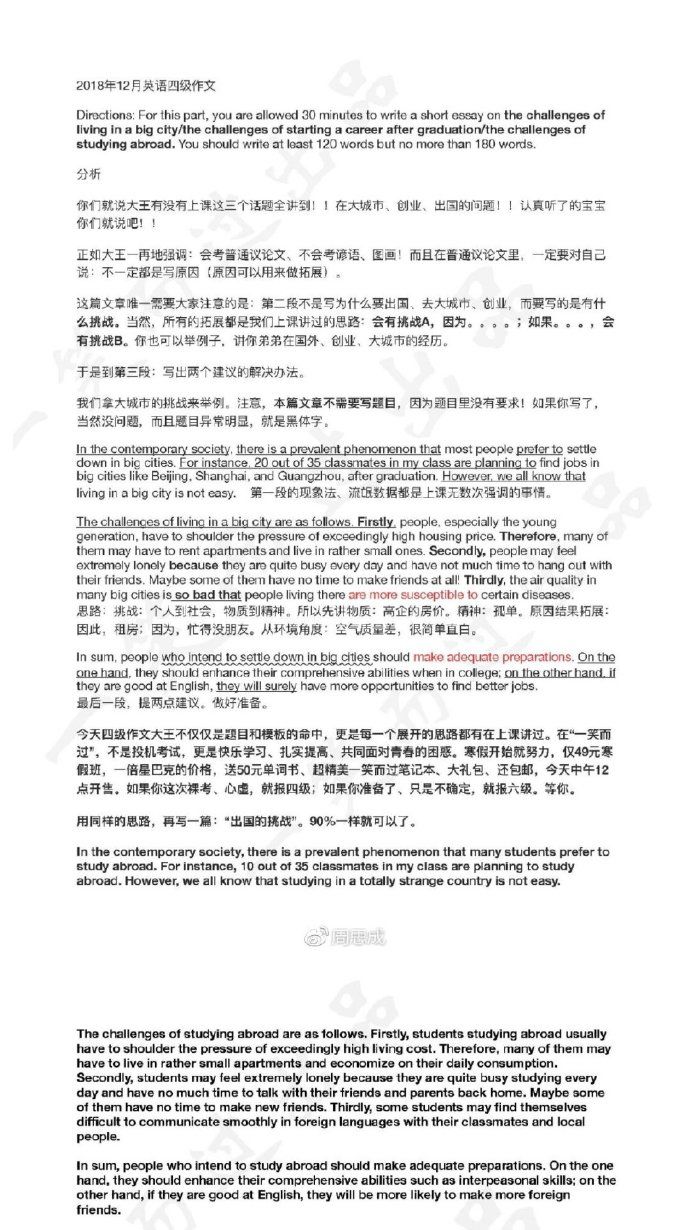LSAT考试全真试题一SECTION3(3)
|
14. How would the author be most likely to explain the correlation between the " salaries of California school teachers [and the] profits of Nevada gambling halls" (Lines 63-64)? (A) There is a positive correlation that is probably due to California teachers' working in Las Vegas on weekends to increase both their salaries and increase both their salaries and Nevada's gambling profits. (B) There is a positive correlation that is probably linked to general economic trends, put no direct causal relationship exists. (C) There is a negative correlation that is probably linked to general economic trends, but no direct causal relationship exists. (D) There is a negative correlation because the element that controls Las Vegas gambling probably has agents in the Calitornia school system. (E) The author would deny the existence of any correlation whatsoever. In most developed countries, men have higher salaries, on average, than women. Much of the salary differential results from the tendency of women to be in lower-paying (5) occupations. The question of whether this occupational employment pattern can be attributed to sex discrimination is a complex one. In fact, wage differentials among occupations are the norm rather than the (10)exception. Successful athletes commonly earn more than Nobel Prize-winning academics; gifted artists often cannot earn enough to survive, while mediocre investment bankers prosper. Given such differences ,the question (15)naturally arises: talent and ability being equal why does anyone-man or woman-enter a low-paying occupation? One obvious answer is personal choice. An individual may prefer, for example, to teach math at a modest (20)salary rather than to become a more highly paid electrical engineer.Some people argue that personal choice also explains sex-related wage differentials, According to this explanation, many women. (25)because they place a high priority on parenting and performing household services, choose certain careers in which they are free to enter and leave the work force with minimum penalty. They may choose to (30)acquire skills, such as typing and salesclerking, that do not depreciate rapidly with temporary absences from the work force. They may avoid occupational specialties that require extensive training periods, long and (35)unpredictable hours, and willingness to relocate, all of which make speclalzation in domestic activities problematic. By choosing to in vest less in developong their career potential and to expend less effort outside (40)the home, women must, according to this explanation, pay a price in the from of lower salaries. But women cannot be considered the victims of discrimination because they prefer the lower-paving occupartions to (45)hugher-paying ones. An alternative explanation for sex-related wage differentials is that women do not voluntarlly choose lower-paying occupations but are forced into them by employers and (50)social prejudices. According to proponents of this view, employers who discriminate may refuse to hire qualified women for relatively high-paying occupations. More generally, subtle society-wide prejudices may induce (55)women to avoid certain occupations in favor of others that are considered more suitable. Indeed, the "choice" of women to specialize in parenting and performing household services may itself result from these subtle (60)prejudices. Whether the discrimination is by employers in a particular occupation or by society as a whole is irrelevant; the effect will be the same. Further, if such discrimination does occur, women exchuded from certain (65)occupations will flood others, and this increase in supply will have a depressing effect on wages in occupations dominated by women 15. Which one of the following is the best little for the passage? (A) Wage Differentials Between Men and Women (B) Women in Low-Paying Occupations: Do They Have a Choice? (C) Sex Discrimination in the Workplace (D) The Role of Social Prejudice in Women's Careers. (E) Home vs. Office: how Does the Modern Woman Choose? |








